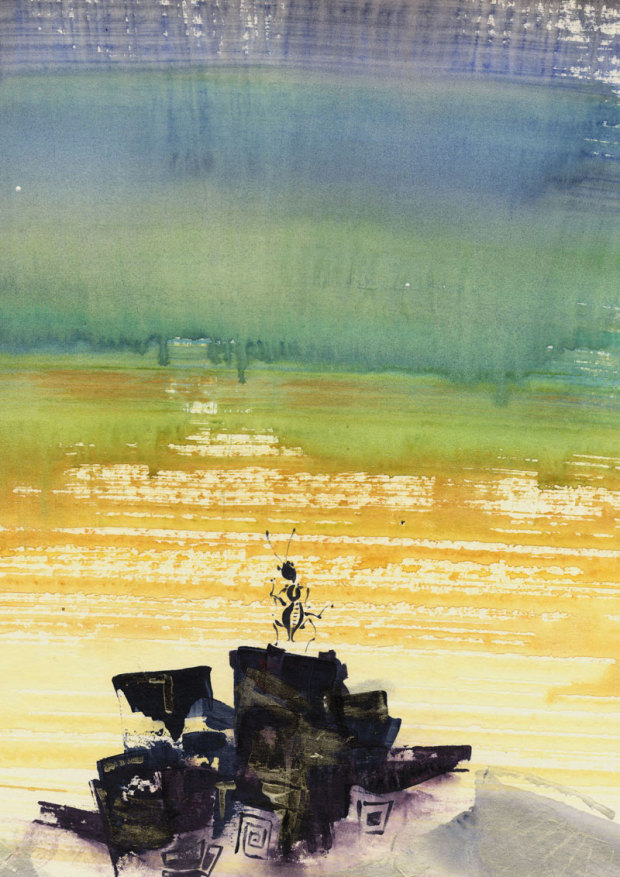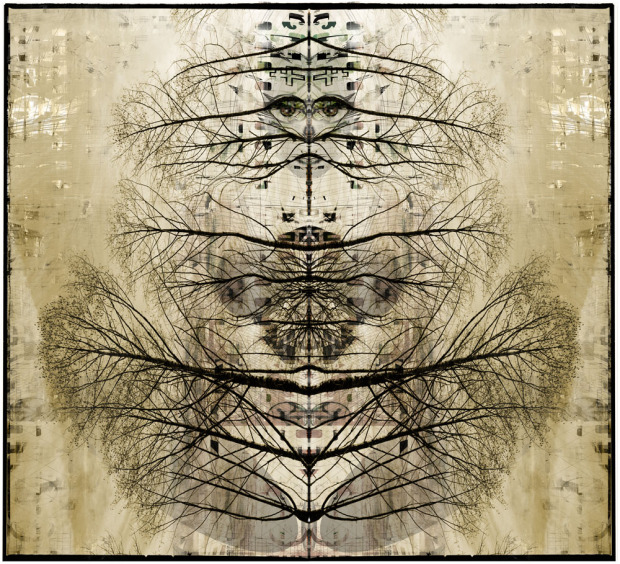A piece that sits at the intersection of two genres

Blue Face Matrix, Archival Ink jet Print, 18" x 16", 2004
In my figurative work I have been fascinated by the bio-geography of the human face and all its subtle beauty. I've also done a few Digital Alchemy type pieces that I call matrixes, the most famous being Tree Matrix.

Tree Matrix, Archival Ink Jet Print, 27" x 14" 2000
I've always liked the juxtaposition of multiple instances of objects in a similar subject matter. I'll have to post a matrix gallery soon. The Blue Face matrix is a conglomeration of some of my many face paintings, They are all acrylic on paper, in this case, usually 11 x 14, Most of these really were painted in blue tones. Although the one in the far lower right, Burnt Umber Aiesha, was originally painted like this.

I'll talk more about figurative painting in a later post, but just wanted to share some thoughts on naming conventions today. I've found that most artists struggle with the process of choosing names for their work. It can demand a level of introspection that might be at cross purposes with the creative energy behind the piece; Sometimes having to label something with a meaningful title can force the artist to say to much. One school of thought is that the viewer/appreciator of the art should not have a 'frame' put around it in the form of a name. I can understand this point of view, and it's why many artists resort to the dreaded 'untitled #x'. I actually think this is the easy way out, but I don't begrudge the artists that choose to do this. In my case, I happen to be a rather prolific painter and my biggest problem is keeping track of them all. I might easily paint fifteen faces like these in a day, and if I'm on a run of faces, I could have over a hundred at the end of a month. If someone told me they just loved the piece called 'untitled face #37" I would have absolutely no idea what they were talking about. In case you haven't noticed, I have a visual brain. (unlike the engineers who named all of our streets and avenues in the Puget Sound region with numbers) But I also dislike trying to come up with a name that tries to convey deeper thematic ideas, although I have dipped into this strategy a few times.

Take the case of Angela With Blond Hair. People will wonder 'Is there a real Angela?' or 'which Angela?'. To set a few things straight, almost all my figurative work, nudes and faces included, are painted from memory and imagination. I rarely work from photographs and almost never with models––outside of life drawing workshops for sketching. So when it comes time to name the pile of faces I've just painted, I play a little game, I take the first piece on the pile and give it an 'A' name, in this case Angela, the next painting on the stack gets a B name, Barbera maybe. In this way I work my way through the alphabet. It gets a little obsessive when I try and find the just the right name that 'fits' the personality of the face staring back at me. In this way its not unlike naming your children I guess. You want to have a name that suits the individual. Usually the names come to me right away but sometimes I get crazy and look up names in data bases on the web. 'Oh this one seems Irish to me and I'm at the the F's so maybe Fiona will do." I then try and add something else descriptive to the name, a word that refers to color or mood or something. If I stopped just at Angela, then sooner or later, I'm going to have more than one Angela. But By adding the blond hair, I get something more unique. This gives me half a prayer of remembering the image and it makes my image database much easier to manage. Imagine searching on 'untitled' and getting back hundreds of entries. Useless!
 Saturday, May 26, 2007 at 09:12AM
Saturday, May 26, 2007 at 09:12AM  Painting
Painting 









